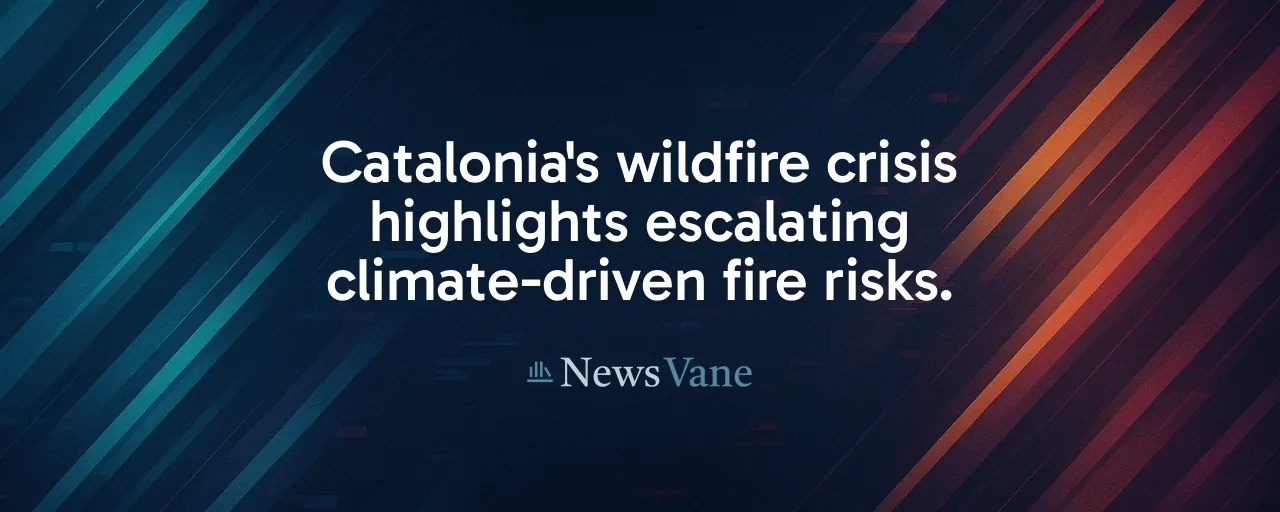A Region in Flames
A fierce wildfire tore through Tarragona, Catalonia, starting July 7, 2025, leaving a trail of disruption. The blaze, fueled by dry Mistral winds and scorching heat, consumed roughly 3,300 hectares of forest and farmland. Over 18,000 residents in nine municipalities faced stay-at-home orders, while evacuations unfolded across rugged terrain. The Catalan Fire Service, backed by Spain's military, battled to contain the flames, but the fire's intensity exposed deeper challenges in managing such disasters.
This crisis, one of Catalonia's worst in years, underscores a pressing issue: how to address wildfires that grow larger and more unpredictable. The Tarragona blaze, centered in Baix Ebre, represents a recurring challenge. Spain endured its hottest June on record, with 21,000 hectares burned nationwide this year. These conditions highlight the need for strategies to reduce fire risks while protecting communities and ecosystems.
The Roots of the Blaze
Several factors converged to make this fire so destructive. Dry winds reaching 90 km/h whipped flames across parched landscapes. Decades of land abandonment left dense scrub and unmanaged forests, creating a tinderbox. Research points to a Mediterranean fire-weather index flagging Tarragona as high-risk during Mistral events. Compounding this, record heatwaves linked to broader climate shifts intensified the blaze's spread.
Historical data paints a grim picture. Catalonia's 2012 fire season saw 15,000 hectares burned, while 2022 brought simultaneous lightning-sparked fires amid drought. Studies show that altered land use, like abandoned farmland, builds up fuel loads, making fires harder to control. These patterns reveal a cycle where human and environmental changes amplify fire risks, calling for solutions that tackle both immediate and underlying causes.
Communities Under Pressure
The human toll of the Tarragona fire runs deep. Residents in towns like Paüls and Xerta faced confinement, with some elderly and vulnerable groups displaced. Smoke posed health risks, and school closures disrupted daily life. Farmers and tourism operators, vital to the region's economy, now grapple with losses. The fire's reach into Els Ports Natural Park also threatens biodiversity, a concern for environmental groups.
Economic ripple effects are significant. Suppression efforts, agricultural damage, and canceled bookings strain local budgets. Insurers are bracing for claims, while municipalities weigh the costs of rebuilding versus prevention. These impacts highlight the need for strategies that safeguard lives and livelihoods and build long-term resilience.
Balancing Firefighting and Prevention
On the ground, over 460 firefighters, supported by aircraft and Spain's Emergency Military Unit, worked tirelessly. By July 9, partial stabilization allowed some restrictions to ease, but rugged terrain and wind shear complicated efforts. Experts argue that rapid suppression is critical. Integrated management, blending prescribed burns, early detection, and mosaic agriculture, offers a stronger defense against future fires.
Catalonia's past provides lessons. In 2019, Ribera d'Ebre's 6,500-hectare fire showed how active farming can slow flames. Research supports combining fuel reduction, like mechanical thinning, with climate-resilient land practices. These methods, paired with robust emergency protocols, could reduce the scale of disasters while preserving ecosystems and rural economies.
A Path to Resilience
The Tarragona crisis points to a broader need for adaptive strategies. Local volunteer brigades and early-warning systems could empower communities. EU funds could support both fuel-reduction projects and renewable energy, balancing immediate needs with climate goals. Streamlining permits for controlled burns, while expanding military rapid-response, offers practical steps forward.
Stakeholders agree on key priorities: protecting lives, minimizing economic loss, and reducing fire risks. Community-led land stewardship, pairing economic incentives with ecological restoration, could bridge gaps between farmers, foresters, and environmental groups. These efforts require coordination across regional and national authorities, ensuring resources reach where they're needed most.
Looking Ahead
The Tarragona wildfire serves as a wake-up call, presenting an opportunity for action. By blending suppression with prevention, Catalonia can build resilience against a warming, fire-prone future. The region's history shows progress is possible when communities, governments, and scientists align on shared goals.
Residents and policymakers now face a pivotal moment. Investing in local preparedness, from volunteer brigades to smarter land use, can save lives and livelihoods. As fires grow more frequent, the focus needs to remain on solutions that endure, ensuring safety and stability for generations.
The path forward lies in unity and action. Tarragona's devastating blaze can spark lasting change if lessons are heeded and resources are mobilized. The region's future depends on turning crisis into opportunity, forging a model for others to follow.
